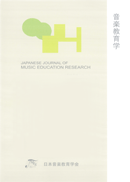Volume 41, Issue 2
Displaying 1-14 of 14 articles from this issue
- |<
- <
- 1
- >
- >|
-
2011Volume 41Issue 2 Pages 1-12
Published: 2011
Released on J-STAGE: August 08, 2017
Download PDF (707K) -
2011Volume 41Issue 2 Pages 13-24
Published: 2011
Released on J-STAGE: August 08, 2017
Download PDF (741K)
-
2011Volume 41Issue 2 Pages 25-26
Published: 2011
Released on J-STAGE: August 08, 2017
Download PDF (119K)
-
2011Volume 41Issue 2 Pages 27-33
Published: 2011
Released on J-STAGE: August 08, 2017
Download PDF (394K)
-
2011Volume 41Issue 2 Pages 34-41
Published: 2011
Released on J-STAGE: August 08, 2017
Download PDF (416K)
-
2011Volume 41Issue 2 Pages 42-49
Published: 2011
Released on J-STAGE: August 08, 2017
Download PDF (422K)
-
2011Volume 41Issue 2 Pages 50-51
Published: 2011
Released on J-STAGE: August 08, 2017
Download PDF (117K)
-
2011Volume 41Issue 2 Pages 52-57
Published: 2011
Released on J-STAGE: August 08, 2017
Download PDF (363K)
-
2011Volume 41Issue 2 Pages 58-63
Published: 2011
Released on J-STAGE: August 08, 2017
Download PDF (334K)
-
2011Volume 41Issue 2 Pages 64-69
Published: 2011
Released on J-STAGE: August 08, 2017
Download PDF (310K)
-
2011Volume 41Issue 2 Pages 70-75
Published: 2011
Released on J-STAGE: August 08, 2017
Download PDF (373K)
-
2011Volume 41Issue 2 Pages 76-81
Published: 2011
Released on J-STAGE: August 08, 2017
Download PDF (349K)
-
2011Volume 41Issue 2 Pages 82-88
Published: 2011
Released on J-STAGE: August 08, 2017
Download PDF (340K)
-
2011Volume 41Issue 2 Pages 89-96
Published: 2011
Released on J-STAGE: August 08, 2017
Download PDF (431K)
- |<
- <
- 1
- >
- >|
